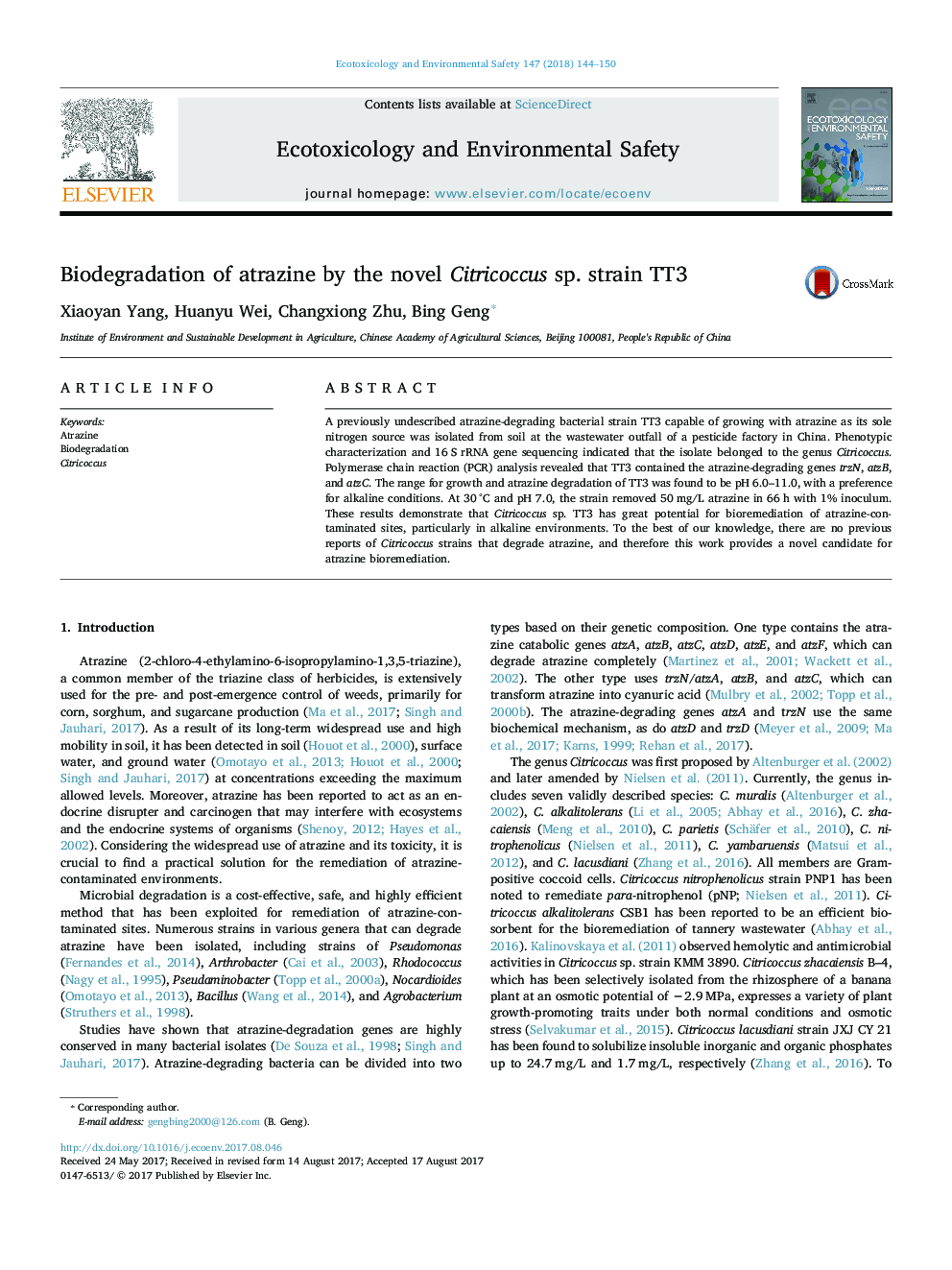| Article ID | Journal | Published Year | Pages | File Type |
|---|---|---|---|---|
| 5747855 | Ecotoxicology and Environmental Safety | 2018 | 7 Pages |
â¢This is the first report on atrazine degradation by Citricoccus sp. strain TT3.â¢Strain TT3 harbors the atrazine-degrading genes trzN, atzB and atzC.â¢The range for growth and atrazine degradation of TT3 incline to alkaline.
A previously undescribed atrazine-degrading bacterial strain TT3 capable of growing with atrazine as its sole nitrogen source was isolated from soil at the wastewater outfall of a pesticide factory in China. Phenotypic characterization and 16 S rRNA gene sequencing indicated that the isolate belonged to the genus Citricoccus. Polymerase chain reaction (PCR) analysis revealed that TT3 contained the atrazine-degrading genes trzN, atzB, and atzC. The range for growth and atrazine degradation of TT3 was found to be pH 6.0-11.0, with a preference for alkaline conditions. At 30 °C and pH 7.0, the strain removed 50 mg/L atrazine in 66 h with 1% inoculum. These results demonstrate that Citricoccus sp. TT3 has great potential for bioremediation of atrazine-contaminated sites, particularly in alkaline environments. To the best of our knowledge, there are no previous reports of Citricoccus strains that degrade atrazine, and therefore this work provides a novel candidate for atrazine bioremediation.
